Portuguese Food Dishes: Basic Overview
Common Ingredients
Common Cooking Methods
Courses
Meals
Key Taste
Eating Etiquette
Meal Presentation
Culinary Festivals
Influence and Fusion
Popular Types of Portuguese Dishes
-
Soups
Hot soups are commonly enjoyed as starters in Portuguese cuisine.
These soups are mostly savory and hearty, with meat, seafood, and vegetables as the main ingredients.
Portuguese soups are ideal for both daily meals and celebrations.
-
Stews
Hearty stews are important entrees in Portugal.
Seafood is the main ingredient for Portuguese stews, with fish, clams, and shellfish as common choices.
Vegetables, legumes, and sausages are popular additions to Portuguese stews.
Portuguese people always serve stews with bread, using pieces of bread to mop up the savory sauce.
-
Grilled and Barbecued Dishes
There are many grilled dishes in Portugal, which serve as entrees, snacks, or street food.
These grilled dishes can be made with meat, poultry, or seafood.
To prepare these dishes, Portuguese people often marinate the ingredients in a blend of various herbs and spices before grilling.
-
Desserts
Sweets, cakes, and pastries are popular desserts in Portugal.
Portuguese desserts often feature a large amount of egg yolks, hence their creamy and custardy flavor and texture.
Catholic monasteries play a significant role in developing many types of desserts in Portugal.
A typical Portuguese meal concludes with sweet treats and beverages like wine or coffee.
Portuguese dishes are specialties popular in Portugal. These dishes are significantly shaped by Celtic and Mediterranean cooking traditions, with various outputs from French delicacies and Spanish specialties.
Portugal’s history of trade and colonization with many parts of Asia, Africa, and the Americas also contribute greatly to the country’s repertoire of ingredients and cooking techniques.
Seafood, vegetables, cured meat, and olive oil are the core ingredients of many savory dishes in Portugal. Meanwhile, Portuguese sweets and desserts made from egg yolks are famous throughout the world.
Read on to learn more about what traditional Portuguese dishes are like, where to find these dishes, and how healthy they are.
Next, I will introduce you to the most popular 24 dishes in Portugal before covering the characteristics of Portuguese cuisine and suggesting ideal drinking pairing combinations.
24 Perfect Portuguese Dishes
Scroll down to explore the 24 most famous dishes in Portugal. Advanced filters like alphabetical sorting, main ingredients, taste, cooking methods, dish types, courses, and global popularity will help you navigate this content more easily.
In addition, there are filters based on specific culinary styles, such as traditional, national, and street food options.
Bacalhau à Brás
- National
- Traditional
Bacalhau, literally “cod,” refers to dried and salted cod in Portuguese cuisine. There are countless ways of preparing bacalhau in this country, such as baking, grilling, boiling, frying, or sautéing.
A famous dish from bacalhau is bacalhau à brás, which includes salted cod, eggs, garlic, onions, potatoes, and parsley. Another popular variant is pastel de bacalhau, a dish made from shredded codfish with garlic, potatoes, and onions.
Bacalhau is so important to Portuguese cuisine that locals call it “fiel amigo” (“faithful friends”). Its history dates back to the Age of Discoveries, when the necessity for preserving food for long sea voyages led to the widespread use of salted cod among Portuguese sailors.
Pastel de Nata
- National
- Traditional
Pastel de nata, also known as pastel de Belém, is a classic Portuguese egg tart pastry created in the 18th century. Its birthplace is a monastery in Belém, Lisbon, hence the alternative name.
A typical pastel de nata consists of puff pastry filled with a custard made from cream, egg yolks, sugar, and a hint of cinnamon and lemon zest.
The tart is baked until the custard is creamy and the top is caramelized, creating a contrast between the crisp, flaky pastry and the soft, creamy custard.
Recognized as one of Portugal’s best conventual sweets, Pastéis de nata is a staple in Portuguese cafes, restaurants, and bakeries. This dessert is best enjoyed warm with coffee.
Sardinha Assada
- National
- Street Food
- Traditional
Sardinha assada is a simple Portuguese dish of grilled sardines. It involves seasoning fresh sardines with coarse salt and grilling them on an open flame, resulting in crispy skin and tender, flavorful flesh.
Sardinhas assadas served on a slice of rustic bread are a staple of Portuguese summer. Locals often accompany them with a side of refreshing salads.
Do you know how the Portuguese eat grilled sardines? They hold the head with one hand and the tail with the other hand. After that, they bite the grilled fish from the side and eat the rest.
Grilled sardines are a traditional feast dish that usually appears in the Feast of St Anthony, also known as “the Sardine Festival,” which takes place on June 12 in Lisbon.
Caldo Verde
- National
- Traditional
Caldo verde, literally “green soup,” is a simple Portuguese soup from the Minho region. It consists of thinly sliced couve-galega (Portuguese kale or collard greens), potatoes, onions, and garlic.
The ingredients of this Portuguese green soup are usually pureed to create a smooth, creamy base. Chouriço (Portuguese smoked sausage) is a common addition for an extra hint of smokiness.
Caldo verde is a staple of Portuguese home cooking and a popular dish for weddings and festivals. Most people serve it with bread on the side.
Cozido à Portuguesa
- National
- Traditional
Cozido à Portuguesa, or cozido for short, is a hearty meat stew from Portugal. Its name translates to “Portuguese stew,” succinctly describing the nature of this dish.
The core ingredients of cozido à Portuguesa are various types of meats, vegetables, and sausages. These ingredients are slowly cooked in a huge pot until their flavors meld perfectly with each other.
In the south of Portugal, you may find a cozido à Portuguesa variation made with chicken, mint, and potatoes. Meanwhile, in the Northeast, the stew includes morcela (blood sausage), alheira (meat and bread sausage), and farinheira (flour sausage).
Francesinha
- Street Food
- Traditional
Francesinha is a popular Portuguese sandwich that originated in Porto in the 1950s. Its name translates to “little French woman,” allegedly because it was adapted from the famous French sandwich croque-monsieur.
This indulgent Portuguese sandwich consists of multiple bread layers, wet-cured ham, linguiça (smoke-cured pork sausage), fresh sausage (like chipolata), and steak or roast meat.
In addition, francesinha is covered with melted cheese. Locals pour a thick, spicy tomato and beer sauce onto the sandwich to melt the cheese.
French fries are a must-have accompaniment for francesinha. Eating francesinha with a fork and knife is recommended since this sandwich is messy to eat with your hands.
Bifana
- Street Food
- Traditional
Bifana is a simple Portuguese sandwich consisting of a crusty bread roll filled with cooked pork. The pork is thinly sliced and marinated in a blend of white wine, garlic, paprika, and other spices, while the bread is glazed with the pork sauce and mustard or piri-piri sauce.
Bifana originated in Vendas Novas, a small town in the Alentejo area between Lisbon and Evora. Later on, the Portuguese developed a lot of variations of this sandwich, adding more ingredients like bacon, lettuce, tomatoes, eggs, etc.
One of the most popular snacks and street foods in Portugal, bifanas are a perfect choice for lunch and dinner, especially with french fries or soups on the side. McDonald’s even offers a special version called McBifana.
Arroz de Pato
- Traditional
Arroz de pato, or “duck rice,” is a classic baked Portuguese rice dish. It hails from the northern region, especially the city of Braga, with carolino (a type of short-grain rice) as the preferred ingredient.
To prepare Portuguese duck rice, people simmer a whole duck in water until tender, shred the duck meat, then cook the rice lightly in the duck broth with the meat, chouriço, and various vegetables. Finally, everything is baked until the rice is fragrant and golden brown.
Arroz de pato is famous for its warmth and complex flavors, making it a staple at family gatherings and traditional Portuguese restaurants.
Polvo à Lagareiro
- Traditional
Polvo à lagareiro is a beloved Portuguese dish prepared by roasting or grilling octopus before baking it with potatoes and olive oil. “Polvo” means “octopus,” while lagareiro refers to a style of cooking that dresses the ingredients with a large amount of olive oil.
Many people think that this octopus dish comes from Beiras, the region that lies between the North of the Tagus River and the South of the Douro River.
Polvo à lagareiro is very popular in coastal regions. Its flavor is delightfully rich and savory, accompanied by a tender yet crunchy texture.
Frango Assado
- Traditional
Frango assado is a popular Portuguese grilled chicken dish. What makes it special is the spicy marinade of garlic, peri-peri (small, fiery chili peppers widely used in Portugal and many Portuguese-speaking countries), olive oil, and various herbs.
This marinade imparts a wonderful flavor to the juicy, succulent chicken. Food stalls specializing in frango assado are called churrascarias, which often offer this chicken dish alongside French fries and salads.
Cataplana de Marisco
- Traditional
Cataplana de marisco is a famous Portuguese seafood stew hailing from the Algarve region in the south. “Cataplana” refers to the clamshell-shaped copper cookware used to prepare this stew.
Cataplana de marisco contains a variety of seafood and vegetables, including shrimp, mussels, clams, garlic, tomatoes, and onions. These ingredients are cooked in a rich, aromatic broth of white wine, olive oil, and various spices.
Alheira
- Traditional
Alheira is a traditional Portuguese sausage with a fascinating history. It was created by Portuguese Jews during the Inquisition to disguise their adherence to kosher dietary laws, which ban the consumption of pork.
Alheira consists of poultry (or beef), bread, olive oil, garlic, and paprika. This pork-free sausage is usually smoked and can be fried or grilled to serve with fried potatoes and fried eggs.
Today, alheira is a popular dish with Portuguese people from all religious backgrounds and stands as a symbol of Portuguese culinary ingenuity.
Amêijoas à Bulhão Pato
- Traditional
Amêijoas à Bulhão Pato is a Portuguese clam dish named after Bulhão Pato, a 19th-century Lisbon poet. It features clams cooked in a fragrant and savory broth of olive oil, garlic, cilantro, and white wine.
Despite the simple preparation, amêijoas à Bulhão Pato offers an umami and exquisite taste. Locals usually enjoy this clam dish with fresh lemon and crusty bread to soak up the sauce.
Hailing from the Extremadura region, amêijoas à Bulhão Pato is now a staple in many Portuguese cities, especially Lisbon.
Caldeirada
- Traditional
Caldeirada is a versatile Portuguese fish stew that doesn’t have a fixed recipe. It is a hearty mix of various types of fish and seafood cooked with herbs, spices, and vegetables like potatoes, tomatoes, and onions.
The ingredients of caldeirada vary by region, reflecting the local catch. White fish like cod, conger, and grouper are often the preferred choices of seafood.
Feijoada
- Traditional
Feijoada is a famous bean stew in Portugal, especially in the northern region. It is a hearty comfort food dish to accompany rice and local sausages, such as morcela and farinheira.
Portuguese-style feijoada is typically made with red kidney beans, various cuts of pork and beef, vegetables, garlic, bay leaves, and paprika.
There are many variations of feijoada in other former Portuguese colonies, especially in Brazil, which considers feijoada one of its national dishes.
Espetada
- Traditional
Espetada encompassess many styles of skewered and grilled meat in Portugal, such as beef, pork, chicken, fish, or seafood. The meat is cut into large chunks, carefully seasoned, skewered on sticks, and grilled over open flames.
Espetada with a side of bread, salads, french fries, and cold drinks is a fantastic summer dish, especially at BBQ parties, outdoor gatherings, and picnics.
Pão de Ló
- Traditional
Pão de ló is a traditional Portuguese sponge cake with a light, airy texture and a sweet, delicate flavor. It is made with eggs, sugar, and flour.
Rather than using yeast or leavening, this Portuguese sponge cake gets its rise not from yeast but from the air whipped into the batter during mixing.
Pão de ló either has a moist center or a dry center, depending on the variety. Locals often serve it during festive occasions such as Christmas and Easter.
Interestingly, pão de ló is actually an adaptation from a French cake called pain de lof. In the 16th century, Portuguese traders brought their sponge cake to Japan, and the Japanese developed their own edition called castella or kasutera.
Ovos Moles
- Traditional
Ovos moles are a well-known Portuguese pastry delicacy created by the nuns of Aveiro in the 16th century. Therefore, their full name is ovos moles de Aveiro.
Ovos moles are made from egg yolks and sugar. This rich, creamy, and golden mixture is typically encased in a thin, delicate wheat flour-based wafer shaped like fish or barrels to pay homage to Aveiro’s maritime culture.
Since 2008, ovos moles have been on the list of products with the Protected Geographical Indication status granted by the EU.
Pudim Abade de Priscos
- Traditional
Pudim Abade de Priscos is a well-known Portuguese pudding hailing from Braga. Its main ingredients are egg yolks, sugar, and bacon lard, which contributes to its unique flavor and silky texture.
Pudim Abade de Priscos literally means “Abbot of Priscos pudding.” This name was inspired by the pudding’s creator, a 19th-century priest named Manuel Joaquim Machado Rebelo, who was the Abbot of Priscos and was renowned for his culinary skills.
This Portuguese pudding is usually flavored with Port wine and lemon or orange zest before being baked in a bain-marie to get a caramelized exterior.
Açorda
- Traditional
Açorda is a rustic Portuguese bread soup that originated in the Alentejo region. It is a simple and affordable mix of mashed stale bread, eggs, garlic, olive oil, vinegar, coriander, and herbs.
There are two main types of açorda in Portugal: traditional Alentejo açorda made from leftover sopas bread and Lisbon açorda based on papo seco bread rolls.
Many Portuguese people enjoy açorda as a versatile soup, side dish, and entree during colder months.
Sopa da Pedra
- Traditional
Sopa da pedra, literally “stone soup,” is a hearty Portuguese soup hailing from Almeirim in the Ribatejo region. Its main ingredients are chorizo, pork, beans, vegetables, and spices, so why was it named “stone soup”?
Here is the answer: Legend has it that a hungry friar started this soup with just a stone and water, then convinced villagers to contribute more ingredients, resulting in a rich dish that they shared together.
The stone is more symbolic today, but the sopa da pedra remains a robust and flavorful meal, embodying the spirit of community and sharing.
Peixinhos da Horta
- Street Food
- Traditional
Peixinhos da horta is a traditional Portuguese dish that dates back to the 16th century. While its name means “little fish in the garden,” it is no fish dish but rather an appetizer or snack consisting of green beans dipped in a light batter and then deep-fried in oil.
Peixinhos da horta was inspired by Japanese tempura and has been popular in Portugal for centuries. A lemon wedge or a tangy dipping sauce is the perfect accompaniment for this vegan dish.
Torta de Azeitão
- Traditional
Torta de Azeitão is a soft, rolled Portuguese sponge cake that hails from the town of Azeitão, south of Lisbon. This sweet treat is characterized by its moist, eggy interior and pleasant aroma of cinnamon or lemon zest.
To make torta de Azeitão, people prepare a sponge cake base, slather it with a rich egg yolk and sugar filling (similar to ovos moles), and roll the cake. The method creates a distinctive spiral pattern when the sponge cake is sliced.
Torta de Azeitão is a beloved dessert or a teatime snack in Portuguese cuisine, showcasing the country’s penchant for egg-based sweets.
Bola de Berlim
- Traditional
Bola de Berlim is a Portuguese doughnut prepared by stuffing dough stuffed with custard. As the name suggests, Bola de Berlim is a variation from German Berliner doughnuts.
The base of bola de Berlim is a round, yeast-leavened dough that is deep-fried, filled with a sweet egg yolk cream, and dusted with granulated sugar. The doughnut offers a soft, fluffy texture contrasted by the creamy, rich filling.
Bola de Berlim is especially popular during the summer, often enjoyed on the beach by hungry sunbathers. Compared to the original cream-filled German Berliner doughnuts, this custardy Portuguese treat makes a delightful change.
After learning about the most popular dishes in Portugal, you are now ready to explore the full depth of Portuguese cuisine. Read on for more information!
What Is Special About Portuguese Cuisine?
The cooking tradition of Portugal stands out from the rest for the following five reasons.
Over the centuries, Portuguese cuisine has been influenced by various cultures, including Celtic, French, Spanish, and Mediterranean traditions.
In addition, Portugal’s extensive exploration, trade, and colonization in the East Indies, Africa, and the Americas introduced a variety of ingredients and cooking techniques to its cuisine.
Portugal’s Atlantic location and temperate climate make seafood the primary source of protein. The country’s varied terrain also supports the cultivation of various fruits and vegetables.
Portuguese cuisine extensively uses olive oil, garlic, onions, and a wide array of herbs and spices. These aromatics appear in both savory dishes and sweet desserts.
Besides spices and herbs, there are many other important ingredients in local cuisine, such as seafood, vegetables, legumes, olive oil, bread, cheese, and many types of meat (especially pork).
Medieval monasteries play an important role in the development of many Portuguese desserts. There is even a term for this category: doçaria conventual (conventual sweets).
These desserts began as a means of using up egg yolks, which were historically a leftover ingredient after the nuns used egg whites to starch clothing.
Typical Portuguese meal are leisurely affairs, with lunch and dinner often including multiple courses. Soups are a common starter, while bread and marinated olives are present in every meal.
Cheese may be served before or after dessert, and coffee is enjoyed after the meal. Portuguese people often linger after the meal to continue the conversation.
Drink pairings are another important part of Portuguese cuisine, and they deserve a whole section.
What Beverages to Pair With Portuguese Dishes?
The four types of beverages below are wonderful choices for complementing various dishes in Portuguese cuisine.
Wine
Notable vintages in Portugal are red wine, white wine, and Port wine. Red wine pairs well with hearty, meat-based dishes, such as cozido à Portuguesa, francesinha, espetada, and arroz de pato.
White wine is the best accompaniment for light, seafood-based, or grilled dishes. Good matches are sardinhas assadas, polvo à lagareiro, cataplana de marisco, and amêijoas à Bulhão Pato.
Port wine is a sweet fortified wine ideal for desserts like pudim Abade de Priscos, ovos moles, and bola de Berlim.
Beer
Beer is a versatile beverage suitable for a wide range of savory dishes, such as sandwiches, stews, and grilled dishes. My recommendations are peixinhos da horta, bifana, francesinha, and frango assado.
Coffee
Portuguese coffee can accompany desserts and sweet treats, such as pastel de nata, pão de ló, and torta de Azeitão.
Fruit-based Drinks
Portuguese cuisine offers many fruit-based drinks, such as poncha (an alcoholic drink from Madeira) or fruit-flavored soda. These beverages go well with grilled or lightly seasoned dishes, including sardinhas assadas and frango assado.
The options mentioned above are among the best beverages in Portugal for complementing local fare. Try my suggested pairings, and you won’t be disappointed!
I hope you now have a solid understanding of Portuguese dishes. If you have any questions about this wonderful cuisine, feel free to ask me in the comment section. Don’t forget to share this list of Portuguese dishes with your friends!


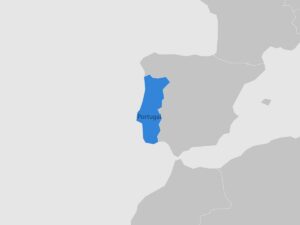
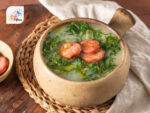
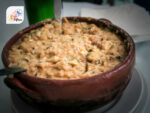
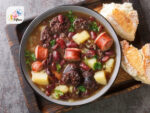
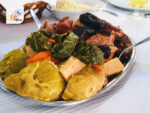
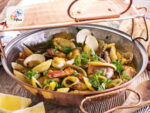

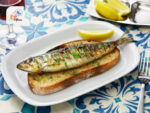





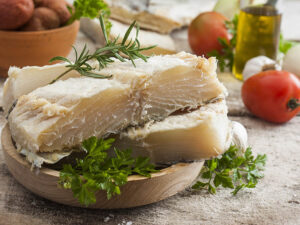

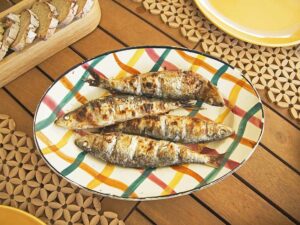
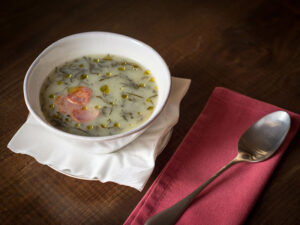
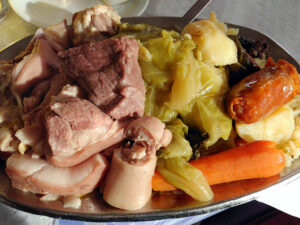
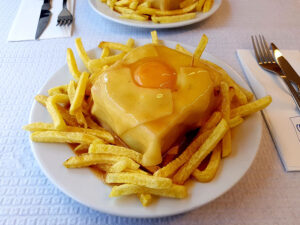
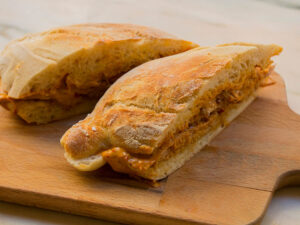
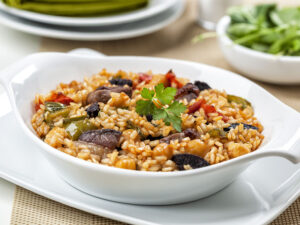
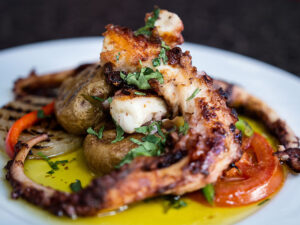

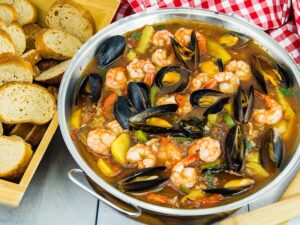

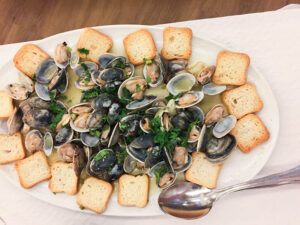
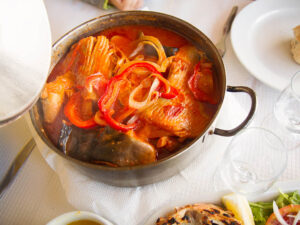
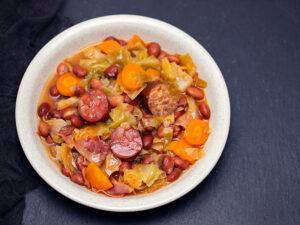
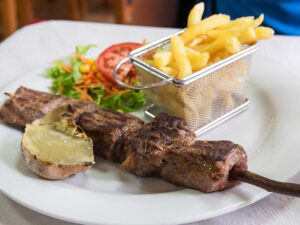
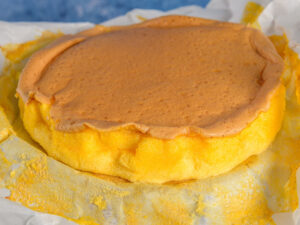
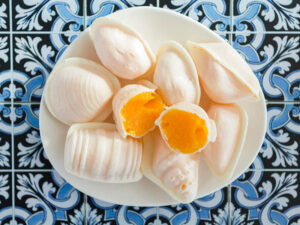

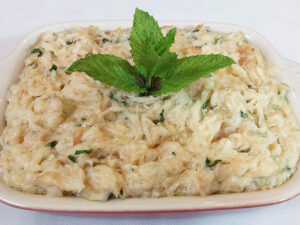
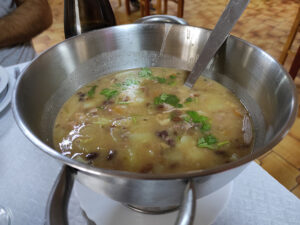
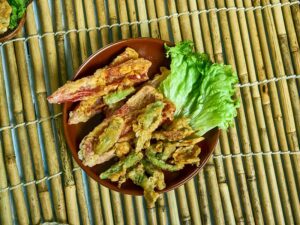


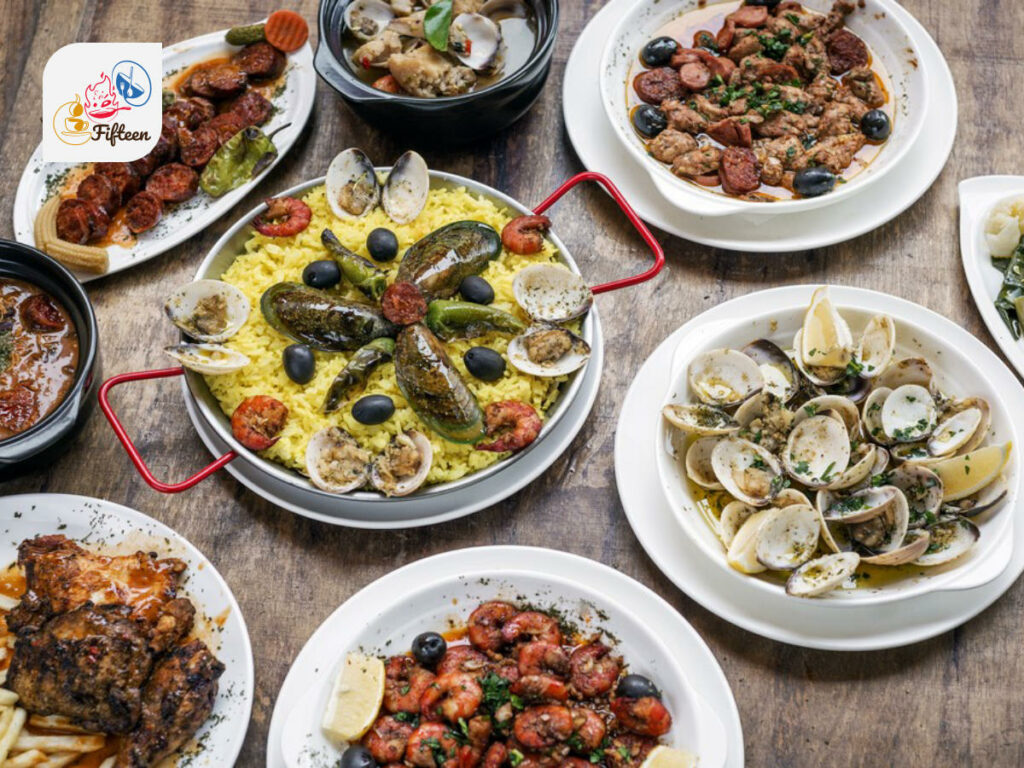
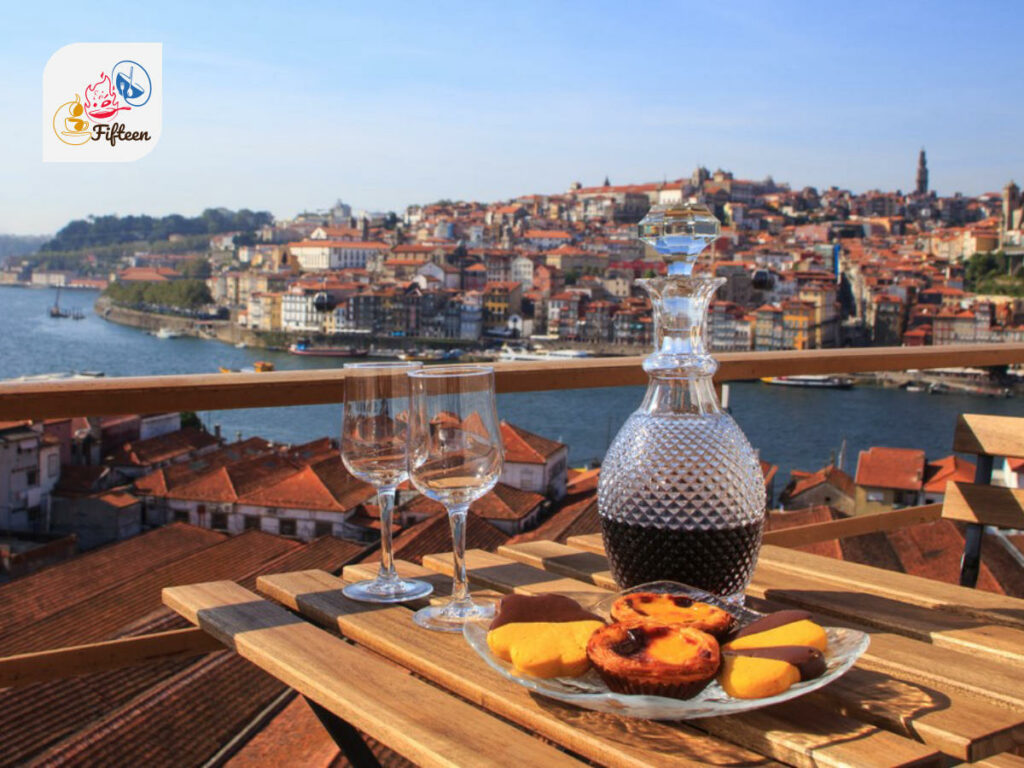

Jamie Scott
Editor in Chief, Senior Content Writer
Expertise
Home Cooking, Meal Planning, Recipe Development, Baking and Pastry, Food Editor, Cooking-video Maker, Western Food Evaluation Expert
Education
Le Cordon Bleu College of Culinary Arts
Local Community College, New York, NY
Jamie Scott is a skilled culinary expert and content creator specializing in Western cuisine. With over 15 years in the culinary field and formal training from Le Cordon Bleu, Paris, Jamie deeply understands how to blend nutrition with delicious flavors. His passion for cooking matches his commitment to making healthy eating accessible and enjoyable.
On Fifteen.net, Jamie brings a fresh perspective to classic dishes and beverages, offering readers insightful recipes, cooking tips, and a fresh view on meal planning that emphasizes taste, health, and simplicity.